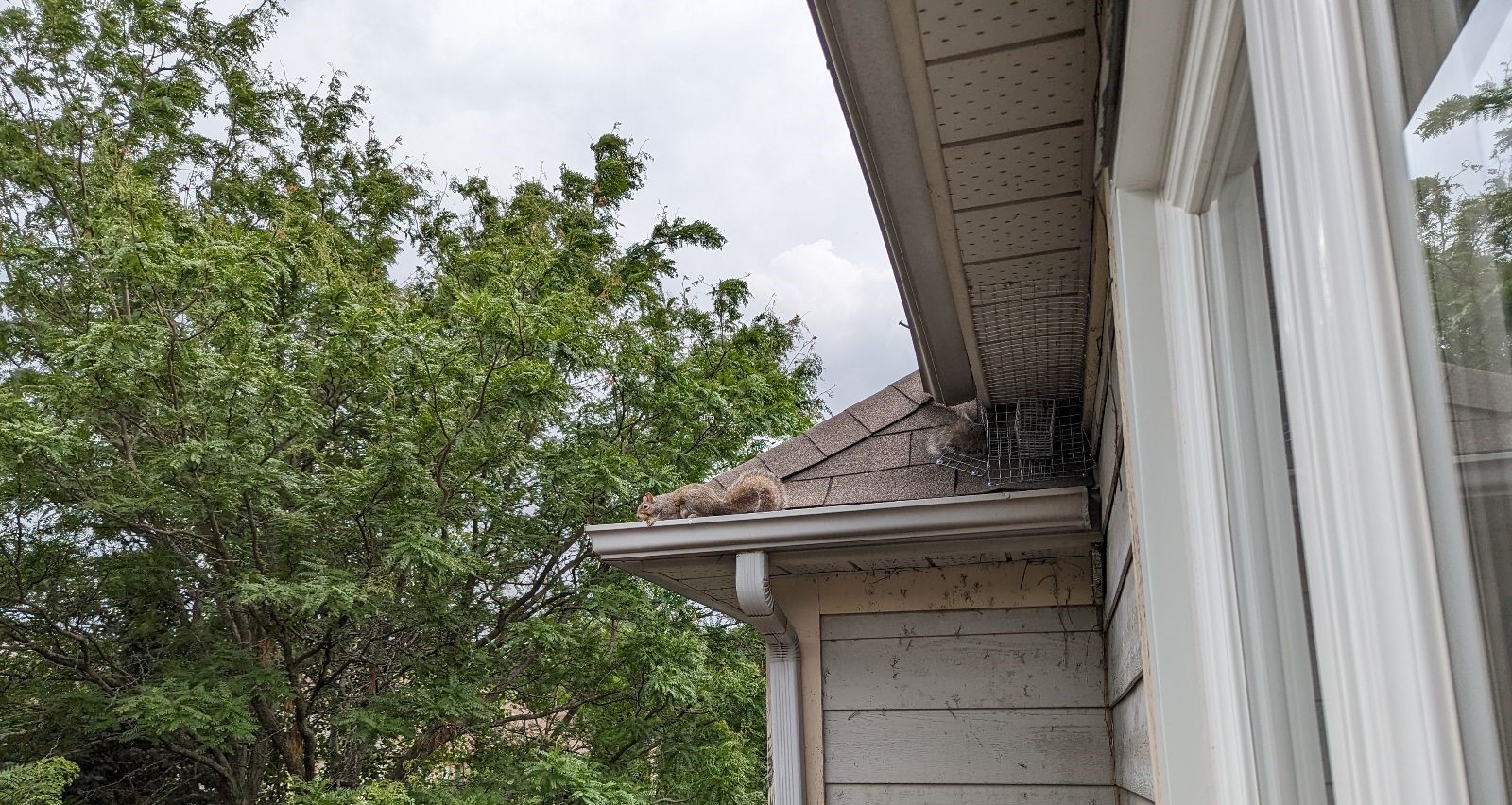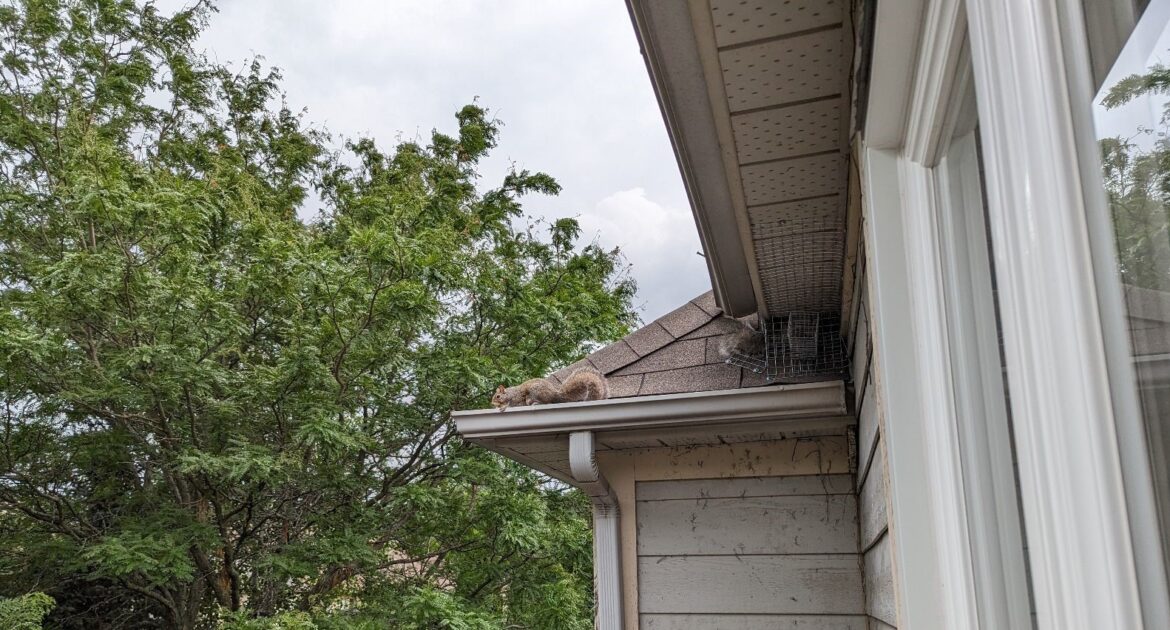In the serene corners of Niagara, the unobtrusive chatter of wildlife often mingles with the rustle of leaves and the gentle flow of the river. This idyllic atmosphere is home to a variety of creatures, each playing a unique part in the region’s ecological tapestry. Among them, the squirrel, often underestimated in its role, is a linchpin of the local biosphere. However, with the encroachment of urban development, squirrel populations have faced rising tensions with humans, particularly homeowners.
Need to know how to live with squirrels? Understanding the complex dynamics between these woodland architects and our urban havens is crucial. Here, we’ll explore the multifaceted footprint of squirrels in Niagara’s ecosystem, their interactions with our day-to-day lives, and how to balance coexistence with the need for wildlife management. For homeowners grappling with these bushy-tailed neighbours, this blog sheds light on why we must respect the role of squirrels in the broader environment, even as we strive to protect our immediate domains.
The Integral Role of Squirrels in the Ecosystem
What is the purpose of squirrels? Squirrels often spotted darting across lawns or scurrying up trees, hold a pivotal place within our local ecosystems. Their activities underpin the health and regeneration of forests, making them unsung heroes in ecological balance. A primary way these energetic creatures contribute is through their role in seed dispersion. By foraging for nuts and burying them in various locations, they inadvertently plant the next generation of trees. This not only ensures forests remain robust and diverse but also aids in the survival of tree species, many of which rely on such mechanisms to spread their seeds.
Niagara is home to several squirrel species, each with its distinct traits and preferences, contributing uniquely to the environment. The Eastern Grey Squirrel, recognizable by its bushy tail and agile movements, is a common sight. It’s known for its habit of collecting and storing acorns, thus playing a critical role in the dispersal of oak trees. On the other hand, the Red Squirrel, smaller in size and feistier in nature, prefers coniferous forests where it can thrive among pine and fir trees, aiding in their propagation.
The presence of different squirrel species in Niagara enhances the area’s ecological depth. These creatures, through their instinctive behaviours, assist in forest renewal and maintain biodiversity. Their role, though often overlooked, is essential in sustaining the habitats we cherish. Through a deeper understanding of their contributions, we can appreciate the delicate balance of nature and the importance of each species within it.
Squirrels’ Impact on Human Habitats
Squirrels, known for their agility and cunning, have impressively adapted to urban environments, showcasing a remarkable ability to thrive alongside humans. These adaptable creatures make their homes in parks, gardens, and backyards, often becoming unwitting participants in our daily lives. Their influence on urban settings is multifaceted, affecting everything from personal gardens to public infrastructure.
In our quest for green living spaces, gardens often attract these furry visitors. Squirrels are particularly fond of raiding bird feeders, digging up bulbs, and nibbling on various plants. While this can lead to a bit of a tug-of-war between gardeners and their uninvited guests, it also encourages a more resilient approach to gardening, pushing us to plant more native species and squirrel-resistant flowers.
One of the more significant issues arises when squirrels venture into areas they shouldn’t. They have a habit of chewing on electrical wires, which can lead to power outages and pose fire hazards. Additionally, their tendency to nest in attics or crawl spaces can result in structural damage over time.
Despite these challenges, the presence of squirrels in urban areas also brings certain benefits. They play a role in aerating soil and controlling insect populations through their foraging habits. Thus, while the interaction between squirrels and humans in urban settings is complex, it underscores our shared space on this planet.
In our efforts to coexist, understanding and respecting the needs and habits of urban wildlife, including squirrels, is key. They remind us of our connection to the natural world and the importance of integrating ecological considerations into urban planning and living. By finding a balance, we not only mitigate the negative aspects of this relationship but also celebrate the diversity and vibrancy that these creatures add to our urban landscapes.
Unveiling the Brighter Side of Squirrel Ecology
Squirrels, often seen as mere backyard acrobats, play a pivotal role in enriching our natural and urban landscapes. Their penchant for gathering and stashing away seeds has an unintended yet profoundly positive effect on the environment. This behaviour, known as scatter-hoarding, is crucial for the dispersal and growth of countless trees and plants. When squirrels forget some of their buried treasures, these seeds get a chance to sprout, leading to the regeneration and expansion of forests and green spaces. It’s a natural process that underscores their role in supporting ecosystem diversity and health.
Beyond their seed-planting adventures, these furry inhabitants contribute to the ecological tapestry in more subtle ways. Their foraging habits play a significant part in soil aeration, which enhances the nutrient cycle and supports plant growth. Additionally, by acting as prey for various predators, they are integral to the food web, maintaining a balance that allows numerous species to thrive alongside each other.
Our appreciation for these creatures grows as we understand the depth of their contribution to our shared environment. The presence of squirrels is not just a whimsical element of our daily lives but a testament to the interconnectedness of all living beings. In recognizing their value, we learn the importance of harmonious coexistence and the preservation of our natural world for generations to come. Their activities, far from being mere antics, are vital chapters in the story of ecological sustainability.
The Delicate Dance: Navigating the Challenges of Urban Squirrels
As we continue to live closer to nature’s creatures, particularly in densely populated areas, it becomes crucial to understand their charm and the challenges they bring to our daily lives. The presence of squirrels, while mostly beneficial for ecological diversity, also presents a unique set of challenges that require thoughtful consideration and action.
Home and Garden Intrusions
One of the more immediate concerns is the potential damage to our homes. These nimble animals are known for their ability to climb and squeeze into small spaces, making attics and lofts ideal spots for them to nest. This not only leads to unwanted noise but can also result in significant damage as they gnaw on woodwork and insulation. In the garden, their quest for food often leads to upturned flower pots, eaten bulbs, and disturbed plant beds, leaving gardeners disheartened.
Electrical and Structural Risks
Another significant issue is the risk these animals pose to our infrastructure. Their penchant for chewing can extend to electrical wiring, causing not only a headache for homeowners but also posing serious safety hazards, such as fires. The structural integrity of buildings can be compromised over time as they make homes with roofs and walls, necessitating costly repairs.
Seeking Equilibrium
To minimize these conflicts, a balance must be struck that acknowledges the needs and habits of these animals while protecting our homes and public infrastructures. Simple measures, such as securing entry points to lofts and using squirrel-proof bird feeders, can mitigate some of the common issues. On a broader scale, community education and humane management practices can help maintain a healthy distance between our living spaces and theirs, ensuring that both parties can coexist peacefully.
The Ethical Approach to Squirrel Wildlife Control
In navigating the shared spaces between humans and our furry neighbours, adopting humane and ethical strategies is paramount. Our commitment to these methods not only reflects our respect for all creatures but also minimizes the ecological footprint of our actions. By focusing on non-lethal solutions such as exclusion techniques and habitat modification, we aim to foster an environment where people and animals can coexist harmoniously.
One effective strategy we employ is the use of exclusion devices and techniques. This involves sealing entry points after ensuring the targeted areas are free of animals, thus preventing re-entry without causing harm. For instance, installing one-way doors at common entry spots allows squirrels to leave but not return, encouraging them to find alternative shelter. This method respects the animals’ right to live while safeguarding our homes against unwanted guests.
Another approach centers on modifying the environment to make it less attractive to squirrels, thereby naturally discouraging their presence in specific areas. This can include removing food sources such as accessible bird feeders, securing trash bins, and pruning tree branches near buildings to limit their access. By altering the habitat in subtle ways, we guide the squirrels toward more appropriate living spaces without direct intervention.
Living Harmoniously with Squirrels
Living alongside squirrels in harmony requires thoughtful strategies that benefit both humans and these agile animals. With their high energy and inquisitive nature, finding ways to coexist without conflict is key. Here, we’ll explore practical tips for managing our outdoor spaces in ways that discourage unwanted squirrel activities while fostering a respectful and benign environment.
Securing Trash to Deter Squirrels
A simple yet effective first step is ensuring our garbage and compost bins are securely closed. This not only prevents squirrels from being attracted to and scattering trash but also supports a cleaner, safer community space. Opting for bins with locking lids can make a significant difference in keeping these nimble creatures at bay.
Implementing Squirrel-Proof Bird Feeders
For those of us who enjoy bird watching, using squirrel-proof bird feeders can maintain the joy of supporting our feathered friends without inadvertently feeding our rodent visitors. These specially designed feeders can deter squirrels while allowing birds to feed undisturbed, thus maintaining the natural balance and purpose of providing for the birds.
Protecting Gardens with Humane Deterrents
Our gardens can be protected through the use of non-harmful deterrents that discourage squirrels from digging and foraging. Techniques such as installing mesh or chicken wire beneath the soil surface can protect bulbs and root vegetables. Similarly, using motion-activated sprinklers or ultrasonic repellents can keep squirrels away without causing them harm, preserving the ecological integrity of our outdoor spaces.
Squirrel Removal and Protection: The Skedaddle Approach
At Skedaddle, we champion the harmonious cohabitation of squirrels and homeowners. Our comprehensive services make sure that your wildlife concerns are resolved with the utmost care and attention.
If the serene tranquillity of your home has been disrupted by the comings and goings of squirrels, it’s time to reach out to Skedaddle. Our team of experienced wildlife technicians will customize a solution that safeguards your space while honouring the contribution of these backyard gardeners to the Niagara wilderness.
Balance is the watchword when it comes to managing the intricate relation between wildlife and human dwellings. Skedaddle presents a thoughtfully tailored, ecologically-minded approach to squirrel control, rooted in a deep respect for all creatures great and small. Contact us to request a quote and learn more about our commitment to your home with our wildlife control in Niagara.




